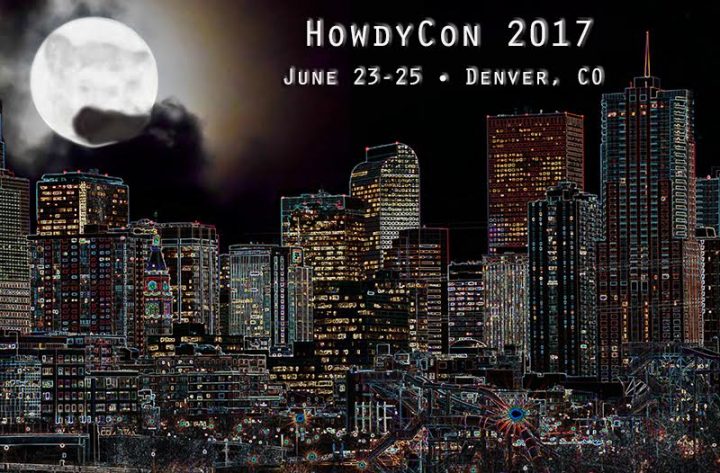 Jon Atack is the author of A Piece of Blue Sky, one of the very best books on L. Ron Hubbard and Scientology. He has a new edition of the book for sale, and for more than three years he’s been helping us sift through the legends, myths, and contested facts about Scientology that tend to get hashed and rehashed in books, articles, and especially on the Internet.
Jon Atack is the author of A Piece of Blue Sky, one of the very best books on L. Ron Hubbard and Scientology. He has a new edition of the book for sale, and for more than three years he’s been helping us sift through the legends, myths, and contested facts about Scientology that tend to get hashed and rehashed in books, articles, and especially on the Internet.
It took me a while to decompress from Scientology. After all, in nine years, I had never doubted. I wasn’t too scared to look under the cover of a hostile book: I read The Mind Benders and Cults of Unreason, heck, I even skimmed Roy Wallis’s sociological examination of the subject – The Road to Total Freedom – but I was not impressed.
I used traditional methods of skepticism throughout. For instance, Evans claimed that Hubbard had become disinterested in Scientology during his time in Rhodesia (now Zimbabwe). It was easy to disprove this assertion, all I had to do was look at my next door neighbour’s brand new (and vastly overpriced) Technical Volumes and into the OEC Policy Volumes to find that Hubbard had churned out issues at his usual hypergraphic pace.
So, I wasn’t easily persuaded. This is why the reference notes to my books and papers are painfully extensive. You don’t have to believe me. I can show you where Hubbard contradicted himself, and where he explained exactly what his counter and other intentions towards us were. If you dare to look, that is. Bear in mind that critics say that ‘cults’ deliberately induce phobia and control information.
I read the documents collected by the remarkable Michael Linn Shannon – some of which may have come from James Phelan’s collection (bless them both – they suffered for their courage, I’m sure). Here were college records showing that Hubbard had been suspended for poor scholarship and failed a minor course in “atomic and molecular physics.” I didn’t know then that this account of the “nuclear physicist” was confirmed in every detail by Hubbard’s own account in the lecture “Introducing Dianetics” on 23 September 1950: “The people were very much impressed with atomic and molecular phenomena. And I took the course and of course flunked it.”
I was alarmed to find that I had been following a pathological liar. A man who told us that the “road to truth” must be trod with “true steps” and that “honesty is sanity.”
This was enough to dislodge my unquestioning belief, but it took months to abandon the TR-0 stare (and the bizarre limitations that it puts upon perception – it is much better to scan the environment than to induce endless ganzfeld trips).
The whole way of thinking imposed upon me by Scientology (at my own expense!) had to be deconstructed. How much easier to simply keep believing! But once you start picking at the fabric of Scientology, you realize that the dear Emperor (or Commodore) had not a stitch on his portly torso. Scientology is the most elaborate confidence trick ever devised by human mind, that is, if Hubbard was indeed human: I suspect he was a Marcabian, or possibly even Xenu the Magnificent himself (“the criminal accuses others of things he himself is doing,” as The Ronald put it).
Soon after I left, I started to meet a slew of people who had worked with Hubbard. Most were very protective of the man who was still their hero. Harvey Haber told me of his first encounter with the Founder: Hubbard screamed profanities at him. Harvey seemed to bask in the memory as he told me, but I was horrified to think that the man I’d revered for so long had a foul temper (yes, I know he was trying to bring the Sea Org “up-tone” from the fear he had drenched them with). My own ideal human is more Buddha than drill sergeant.
Captain Bill Robertson, who really did have captain’s papers (his Sea Org rank was Second Deputy Commodore), confided that he had twice seen Hubbard do something that would make anyone leave Scientology in a heartbeat. You can imagine how hard I pressed him for the details, during the six months he spent trying to persuade me back into the fold.
Along the way, I spoke with tens of people who had spent time close to Hubbard, and they told me consistent stories. Some still loved the man, and believed in his purported Technology of the mind and spirit; some no longer loved the man, but believed in his Technology; yet, others, including John McMaster and John Sanborn – who oversaw all publications from 1954-1978 – had no single good word to say about Hubbard, though McMaster still practiced a version of the Technology.
I did not abandon Scientology as part of any government plot. No one sinister has ever funded my work (no, I didn’t even work for Eli Lilly or Hill and Knowlton, though I spoke to each a single time). I wasn’t dragged into the basement at the Blue Buildings and shocked with cattle prods, like Frank Notaro (the bruises were like tennis balls – I saw them).
No one “snapped” me either in or out of Scientology. Nor did anyone “deprogram” me. I spent years thinking my way around the vast Scientology maze, and checking the ideas against each other. Most of my statements about Hubbard’s past are confirmed by his own, because nearer to the event he was usually more truthful: so the claim in the 1960s to have been a “blood brother” of the Blackfoot Pikuni conflicts with the dustsheet of his first (1934) novel, Buckskin Brigades, where he says he took the story (about the Blackfoot Pikuni) from someone who had actually spent time with them.
I thought my way through Scientology. I haven’t found the way, the truth, or the life, and have nothing to sell, other than a few books (all rather cheaper than any Scientology book), but it still exasperates me to think that there are people out there who cannot or will not think, but instead choose to be dependent on someone who offers to sell them “self-determinism” – just as long as they followed the “white-taped path” exactly as instructed. It took me years to bring those two ideas together, and therein lies the problem: Hubbard constructed a self-referential system which allow no comparison between its parts. Once you can make comparisons and accept the contradictions without offering a flood of justifications first, then the enchantment is broken.
Thirty years ago, a former Commodore’s Messenger told me that the great thing was that we would never be tricked again. I told him that the great thing is that I know I’m gullible – and that makes me more cautious. It is hard to admit that I was completely taken in, but I’ve come to believe that Scientology and Dianetics are nothing more than an elaborate scam, purposefully designed to ameliorate Ronald Hubbard’s desperate self-loathing. If we can learn from that, we can help others to be more skeptical, more considerate and, perhaps, rein in that pride which always leads eventually to a fall.
— Jon Atack
——————–
Talking Scientology with Jillian Barberie
We always enjoy our visits to KABC 790 with Jillian Barberie in Los Angeles. And earlier this week, we had another fun time.
——————–
Go here to start making your plans.
——————–
 Posted by Tony Ortega on December 10, 2016 at 07:00
Posted by Tony Ortega on December 10, 2016 at 07:00
E-mail tips and story ideas to tonyo94 AT gmail DOT com or follow us on Twitter. We post behind-the-scenes updates at our Facebook author page. After every new story we send out an alert to our e-mail list and our FB page.
Our book, The Unbreakable Miss Lovely: How the Church of Scientology tried to destroy Paulette Cooper, is on sale at Amazon in paperback, Kindle, and audiobook versions. We’ve posted photographs of Paulette and scenes from her life at a separate location. Reader Sookie put together a complete index. More information about the book, and our 2015 book tour, can also be found at the book’s dedicated page.
Learn about Scientology with our numerous series with experts…
BLOGGING DIANETICS: We read Scientology’s founding text cover to cover with the help of L.A. attorney and former church member Vance Woodward
UP THE BRIDGE: Claire Headley and Bruce Hines train us as Scientologists
GETTING OUR ETHICS IN: Jefferson Hawkins explains Scientology’s system of justice
SCIENTOLOGY MYTHBUSTING: Historian Jon Atack discusses key Scientology concepts
Other links: Shelly Miscavige, ten years gone | The Lisa McPherson story told in real time | The Cathriona White stories | The Leah Remini ‘Knowledge Reports’ | Hear audio of a Scientology excommunication | Scientology’s little day care of horrors | Whatever happened to Steve Fishman? | Felony charges for Scientology’s drug rehab scam | Why Scientology digs bomb-proof vaults in the desert | PZ Myers reads L. Ron Hubbard’s “A History of Man” | Scientology’s Master Spies | Scientology’s Private Dancer | The mystery of the richest Scientologist and his wayward sons | Scientology’s shocking mistreatment of the mentally ill | Scientology boasts about assistance from Google | The Underground Bunker’s Official Theme Song | The Underground Bunker FAQ
Our Guide to Alex Gibney’s film ‘Going Clear,’ and our pages about its principal figures…
Jason Beghe | Tom DeVocht | Sara Goldberg | Paul Haggis | Mark “Marty” Rathbun | Mike Rinder | Spanky Taylor | Hana Whitfield







